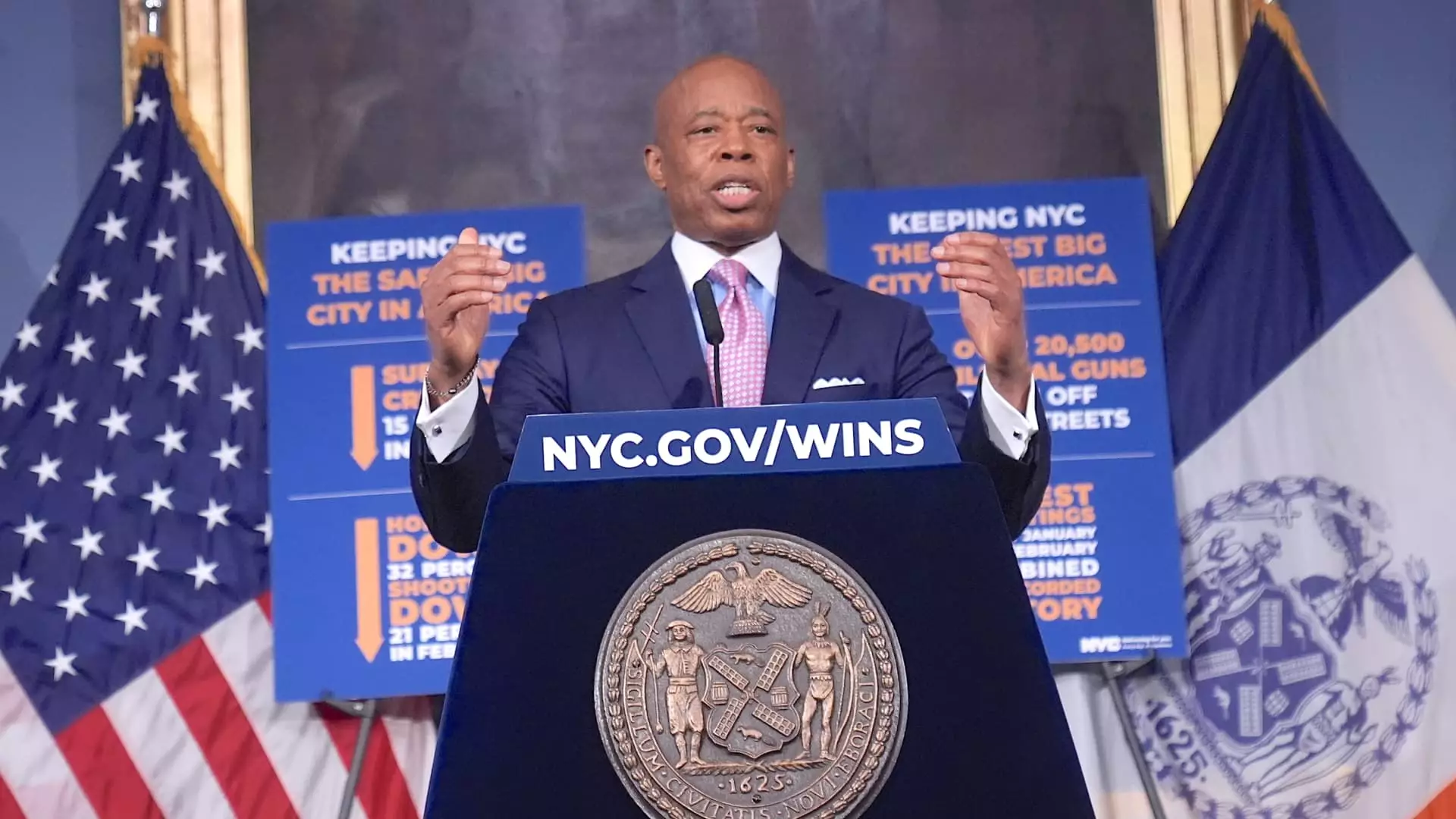In a surprising turn of events, New York City Mayor Eric Adams has announced his decision to run for reelection as an independent candidate, opting out of the crowded Democratic primary just a day after a federal judge dismissed corruption charges against him. This conveys a distinct political maneuver, characterized by a desire to reposition himself away from party politics in a moment of personal challenge. Adams claims to prioritize the interests of New Yorkers over political ties, which resonates with the sentiments of many disillusioned citizens who have grown weary of traditional party allegiances. But can one truly extricate themselves from the political machine that often defines such public figures?
Adams cited the need for “independent leadership that understands working people,” echoing a longing for a government that genuinely represents its constituents rather than party interests. It is crucial to dissect the motivations behind this decision. Escaping the shadow of controversy certainly plays a role, but the underlying drive appears to be a yearning for liberation from constraints that come with partisan identities. The question remains: Is this a strategic pivot to garner broader support, or a sincere yearning for a more inclusive governance style?
The Sting of Scandal
The backdrop of Adams’ re-election campaign involves a tarnished cloak of allegations. Initially indicted for receiving extravagant gifts from Turkish nationals, the subsequent dismissal of these charges should have offered a sigh of relief. Instead, it sounds a clarion call of apprehension: do these accusations reflect a deeper malignancy within Adams’ administration or merely a political game played in the blue state of New York? His assertion that the charges were “false” begs deeper examination. While the judicial system has deemed the evidence insufficient for prosecution, the specter of impropriety may linger in the public consciousness.
The federal Judge Dale Ho’s ruling to dismiss the indictment “with prejudice” is as much a protective measure for Adams as it is an assurance to the public that governance can continue unencumbered. Yet, the dismissal raises ethical queries regarding how leaders negotiate their way through potentially dubious relationships and favors, which often undermine public trust. How can Adams expect New Yorkers to view him as a leader when trust has already been eroded?
The Race, Reimagined
Following his declaration to run as an independent, Adams cheekily described himself as a “racehorse that has been held back.” This metaphor resonates powerfully with constituents who feel marginalized by a political landscape saturated with divisive partisanship. His campaign appears poised to challenge the status quo, promoting a message of unity over division. However, the implications of positioning himself independently must not be overlooked. Independence is a double-edged sword: while it provides the freedom to redefine priorities, it also raises the issue of isolation from essential party support.
In a striking proclamation via a video posted on social media platform X, Adams asserted that he would tackle the electoral challenge directly. By appealing to “all New Yorkers,” he seems to pivot away from mere party alignment towards a broader appeal. Nonetheless, one must ask whether this scrumptious independence is a panacea for his political identity or just a stopgap measure to boost his dwindling fortunes amidst controversy.
Navigating an Uncertain Political Landscape
As he faces competition from a cadre of erstwhile Democrats, including familiar names such as former Governor Andrew Cuomo, his insistence on an independent campaign could both invigorate and alienate voters. This is a high-risk strategy: while Adams attempts to break free from the Democratic Party’s constraints, he risks also detaching himself from its considerable organizational resources in New York.
Moreover, by putting forth his own political ethos, Adams may be indicating a shift away from traditional Democratic priorities, potentially opening avenues for crossover appeal that could stitch together diverse factions within the city. Yet, this political gamble comes with the realization that a significant portion of New York City’s electorate still holds loyalty to established party affiliations. Can Adams transform this independence from a mere label into a potent political force?
While the path ahead for Eric Adams is wrought with challenges, his audacious pivot to an independent run speaks volumes about the evolving dynamics of urban governance. With the current cultural and political currents leaning precariously towards discontent, his journey may reflect a growing demand for leaders who can transcend party lines and put the welfare of the people first.


Leave a Reply